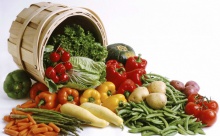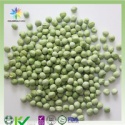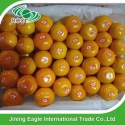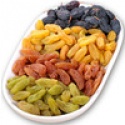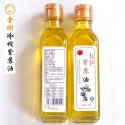The largest segment of the global fruit and vegetable market is the Asia-Pacific region (about 68.1% of the total cost volume) and the main producer, exporter and importer is China. China accounts for more than half of world production and exports of apples. Processing is exposed only on a quarter of them. Other apples are consumed fresh. China also has a leading position in the world in the production and export of carrots and turnips. The expediency of studying the Chinese approach to dealing with fruit and vegetable raw materials is obvious.
A major area of processing of vegetables and fruits on a global scale is the completion of pre-sale of fresh fruits and vegetables. Qualitative its implementation increases the attractiveness and competitiveness of the products on the market. For example, in European supermarkets today cannot meet the unwashed vegetables. The use of containers, sorting of fresh vegetables also increase interest in them of buyers. Processing companies, which offer a set of services pre-sale preparation of fruits and vegetables according to modern standards and requirements of customers took advantage of this circumstance. These may include the presentation of packaging (boxes, pallets), as well as sorting, grading, cleaning, bulkhead and packaging services (wholesale and retail), retail packaging, kitting, packing of fruits and vegetables (mesh tray), vacuum packaging and other operations.
As a result, the roots are packed into the net already washed, dried, polished and sorted.
Features of vacuum packaging
First of all it comes to vacuum packaging, which has so far failed to resolve all the problems associated with the storage of perishable products in a vacuum. It refers to the mechanical deformation of the product, which leads to disruption of its texture, as well as partial loss of its appearance and taste. These factors are critical for fresh vegetables.
The second problem of the vacuum is anaerobes. In a vacuum, these microbes grow and multiply, promoting damage to products. These factors hamper the development of vacuum technology.
The preservative effect on the growth of microflora exerts carbon dioxide, which served as the impetus for the development of food packaging technology in modified atmosphere. However, in many countries, this technology in the fruit and vegetable industry is almost not developed, although other segments already in use.
Frozen foods
The world market of frozen fruits and vegetables increases by 3.7% annually. The world's largest consumers and importers of frozen products are the United States and Sweden, where their consumption has exceeded 50 kg per capita per year.
The range of frozen vegetables and fruits depend primarily on the national traditions and consumer demand, the active promotion of products on the market. In the US, are consumed significant amounts of frozen corn in Europe - green peas, spinach, green beans, mushrooms, cherries, black currants, strawberries.
Expansion of the product range
In Europe, the trend of development of production of canned of marinade type, namely with various additives and very beautiful decoration design. These products relate to the first-class and represent the vegetables in oil and grilled vegetables. In many European countries is perfectly debugged not only the production but also the export of canned vegetables in this form.
A large group of canned national products, like seasoning sauces, (tomato-based and soy-based), and other products are produced and exported worldwide. Here it is worth mentioning the popular "Pesto" sauce, which is made on the basis of cheese, olive oil, and basil. However, in different countries, it may have different ingredients and their taste nuances. For example, in Germany, instead of basil are used ramsons. In the Bay of Naples area, it is cooked with almonds and dried tomatoes.
Another trend of the European vegetable market is the development of the production and wholesale of juice drinks with suspended particles of flesh. For the production of such drinks, it is necessary to make a research on specific types of products, the selection of certain stabilizers, their concentration and technologies. In Europe is also developing the production of vegetable juices. For example, in Germany, there’s a growing demand for the juice of fermented cabbage. This juice is allocated directly by pressing and subsequent fermentation by lactic acid bacteria. Another important trend in the development of the world vegetable market is the growing influence of factors on the demand for the consumer packaging.
Thus, the direction of canning products in various forms of plastic packaging is developing. The world market dictates the rules of the game. First of all, the manufacturers and suppliers of fruit and vegetable products should study the needs of a particular customer.

